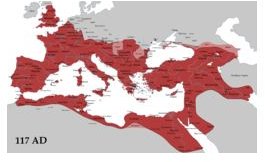How Did Latin Evolve Into Spanish? A Look at Nouns
How Spanish Nouns Evolved From Latin
As most readers know, Spanish is one of several languages that evolved from Latin, which was the language of the Roman Empire. This language family is relatively young. They are called, collectively, Latinate or Romance languages. The word “Romance” has nothing to do with romantic, but with Roman.
When the Roman Empire fell, the Latin spoken in the various regions of what had been politically unified began to differentiate. This period is known as the Middle Ages. These late forms of spoken Latin are often called proto-Romance, for early Romance language or, more specifically, proto-Spanish, proto-Italian and so forth.
For whatever reason, the Latin spoken in the central part of the Iberian peninsula (Castile), formed its nouns differently than their cousins in Italy. The Italians formed nouns based on the nominative case in Latin, the form used to denote a grammatical subject. In Castile, on the other hand, the nouns were formed from the form of a Latin noun used as the direct object, known as the accusative case. Latin distinguishes singular and plural by various endings in all the various cases.
Let’s take one example. The word homo-sapiens comes from the singular form for man in the nominative case (when man is the subject of a clause). Likewise, homines is the plural, which gave rise to uomo and uomi in Italy, for man and men. In Spain, the accusative case, singular and plural was the starting point for the evolution of hominem and homines (the latter is also the accusative plural) to become hombre and hombres.
Here are the principal stages from hominem to hombre: hominem > homne > hombre. The first step involved the weak pronunciation of the final m and the loss of the brief syllable i. This brought the n and the m together. The next step is curious – the place and mode of articulating (pronouncing) this consonant cluster resulted in a b (the bilabial occlusive m brings the lips together and then an r “sprung up” because of the position and mode of pronouncing the n. Try saying them in sequence and you can almost feel the impact the passage of time has on language!
References
- The author has more than 20 years’ experience teaching and translating Spanish.
This post is part of the series: How Latin Became Spanish
The articles in this series deal with the etymology and evolution of Spanish from its mother tongue. They are written for the non-specialist, for teachers whose students ask the inevitable question “why…” which can only be answered with a “how…”
